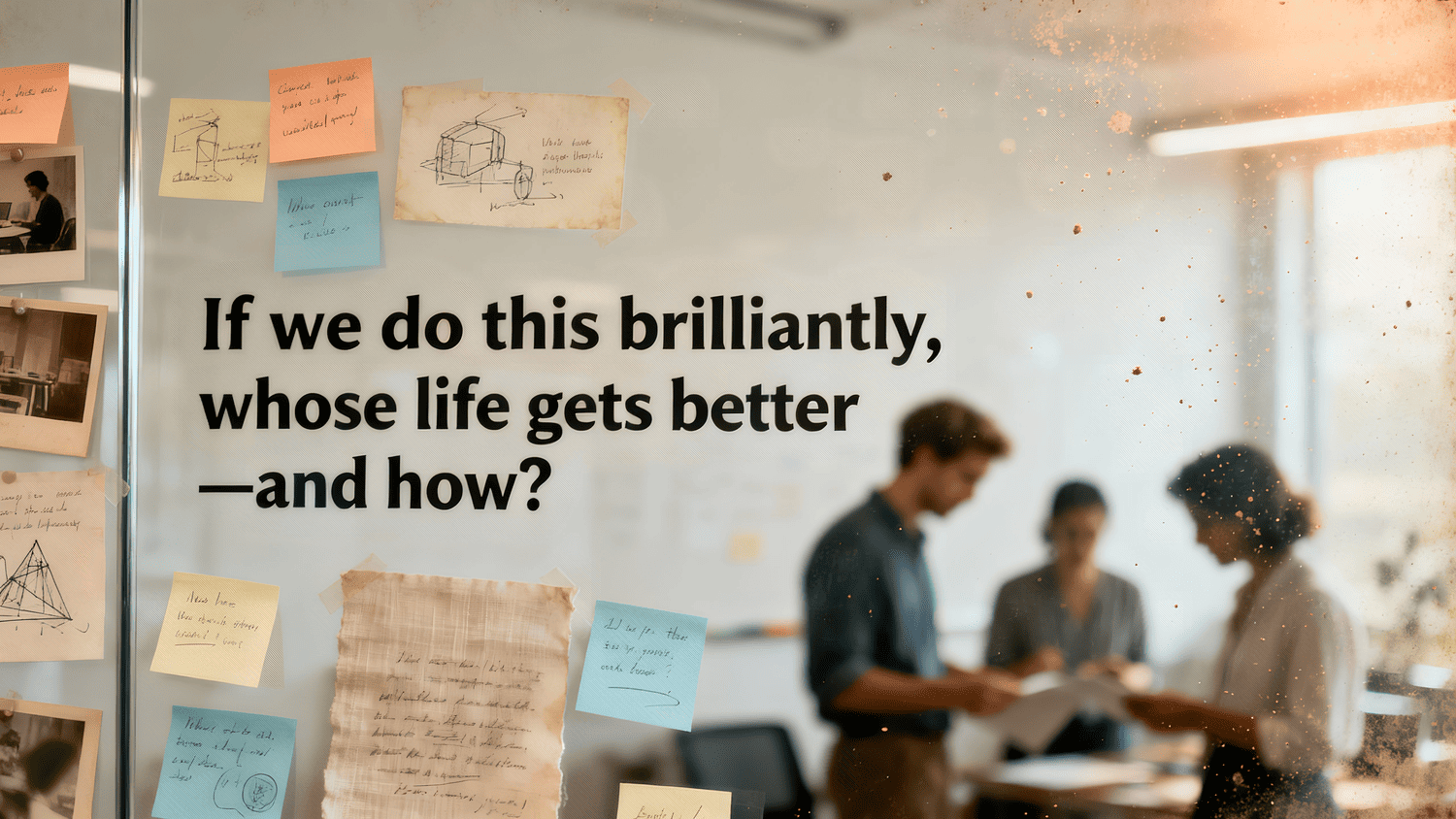Picture this: Keith is a product manager, his team just spent six months building a sophisticated new feature. The launch goes smoothly. The marketing team celebrates. Then the analytics come in—barely 2% of users ever touch it.
Sound familiar? Keith is not alone. According to analysis of 615 software products, 80% of features are rarely or never used. Just 12% of features generate 80% of daily engagment. The cost? Public cloud companies alone waste an estimated $29.5 billion annually on features that gather digital dust.
For a typical software company with $5 million in revenue, that's approximately $1 million spent building and maintaining features users ignore. This technical debt from feature bloat consumes 20-40% of IT balance sheets. Yet companies keep building features nobody asked for.
Sound familiar? Keith is not alone. According to analysis of 615 software products, 80% of features are rarely or never used. Just 12% of features generate 80% of daily engagment. The cost? Public cloud companies alone waste an estimated $29.5 billion annually on features that gather digital dust.
For a typical software company with $5 million in revenue, that's approximately $1 million spent building and maintaining features users ignore. This technical debt from feature bloat consumes 20-40% of IT balance sheets. Yet companies keep building features nobody asked for.
Why does this happen? More importantly, how can we stop it?
The examples below aren't meant to criticize specific companies. We've all built features that didn't land. They're shared to identify patterns we can all learn from.
The Graveyard of Corporate Social Networks
Let's start with one of the most expensive feature failures in recent history: enterprise social networks. The idea seemed brilliant—bring the engagement of consumer social media to the workplace. The execution? A multi-billion dollar disaster.Employees don't want to mix their personal and professional lives on a single platform. They have LinkedIn for professional networking, Slack for work chat, and Instagram for sharing their weekend. Forcing a Facebook-style feed into the workplace ignored a fundamental truth—work is work, and most people want to keep it that way.
In our research, we found that over 200 employees at one organization tested such a platform. The reaction was overwhelmingly negative. Workers had no interest in sharing personal updates on a work platform. Usage flatlined, and the feature became a ghost town before being quietly retired.
When Banks Try to Become Travel Agents
Some feature failures stem from companies venturing far outside their core competency. Consider the financial institutions that decided their mobile apps should also book your vacation.One major bank integrated an entire travel booking service into their mobile app—letting users search and book hotels and flights from the same app they use to check their balance. The result? Near-zero usage after significant development investment.
As one product manager observed: "There are hundreds of improvements our customers actually want in their banking experience. Becoming a travel agent isn't one of them." The travel booking features languished unused, eventually removed in quiet updates that hoped nobody would notice (nobody did).

HIPPO in the room
The Three Deadly Patterns Behind Feature Failures
After analyzing dozens of feature failures, three patterns emerge:
1. The HiPPO in the Room
HiPPO stands for "Highest Paid Person's Opinion." A senior executive becomes enamored with an idea—often inspired by a competitor or trend—and pushes it through despite lack of user validation. Teams feel pressure to build it, even when user research suggests otherwise.
The enterprise social network failures exemplify this. Leadership saw consumer platforms' success and assumed it would translate to enterprise. They never validated whether IT departments wanted to manage another social platform or whether employees desired another digital water cooler.
2. The Copycat Reflex
"X has feature A, so we need feature A!" This thinking drove dozens of companies to bolt on disappearing content features that made no sense for their users. The copycat reflex assumes features are universally valuable rather than contextually specific.
These Stories clones failed because each platform has a different value proposition. One platform's value is public, permanent discourse. Another's is professional achievements that shouldn't disappear.
3. The Swiss Army Knife Delusion
Companies see adjacent markets and think, "We already have the users, why not capture that revenue too?" This drives banks to add travel booking, e-commerce sites to add social networks, and productivity tools to add gaming features.
The delusion lies in misunderstanding why users choose your product. E-commerce customers don't lack places to share lifestyle content—they come for efficient shopping. Banking customers don't lack travel booking options—they want better banking features. Every unrelated feature adds complexity while delivering no real value.
When "Nobody Asked For It" Actually Works
Here's the twist: some of the most successful features in tech history were things nobody explicitly requested. The difference? They solved problems users didn't know how to articulate.
Spotify Wrapped started as a simple year-end email but grew into a cultural phenomenon reaching 120 million users by 2021. Nobody asked Spotify to create shareable stories about their listening habits. But Wrapped tapped into users' desire for self-expression and identity—needs they couldn't articulate but immediately recognized.
Slack's emoji reactions seemed frivolous when introduced. Who needs to respond to messages with a party parrot? But reactions actually solved a hidden problem: message overload. Teams now use specific emojis as lightweight workflows. Reactions reduced unnecessary "thanks" and "agreed" messages while creating new forms of efficient communication.
Instagram Stories, yes, directly copied from Snapchat—succeeded where others failed by starting simple and evolving based on usage. Within months, it reached 200 million daily users and eventually surpassed Snapchat's total user base. The difference? It aligned with Instagram's visual sharing DNA while others forced the feature onto incompatible platforms.
The Success Formula: Solving Unrecognized Problems
Reduce friction in existing behaviors. Make something users already did easier, not something entirely new.
Reveal latent needs. Users didn't ask for Spotify Wrapped because they didn't know they wanted to share their music identity. But once available, the need became obvious. The feature revealed rather than created desire.
Start simple and evolve. Successful features begin with basics and gradually add capabilities based on actual usage. They don't launch with twenty features nobody understands.
Align with core product value. Figma's multiplayer editing—letting designers work simultaneously with visible cursors—seemed radical. But it aligned perfectly with Figma's cloud-based, collaborative value proposition. It enhanced rather than distracted from core functionality.
Reveal latent needs. Users didn't ask for Spotify Wrapped because they didn't know they wanted to share their music identity. But once available, the need became obvious. The feature revealed rather than created desire.
Start simple and evolve. Successful features begin with basics and gradually add capabilities based on actual usage. They don't launch with twenty features nobody understands.
Align with core product value. Figma's multiplayer editing—letting designers work simultaneously with visible cursors—seemed radical. But it aligned perfectly with Figma's cloud-based, collaborative value proposition. It enhanced rather than distracted from core functionality.
The Modern Defense: Frameworks That Actually Work
Continuous Discovery
Teresa Torres's framework mandates product teams (not just researchers) conduct weekly customer conversations. This constant contact helps teams distinguish between what users say they want and what they actually need. Companies using continuous discovery report 40% better feature adoption rates.Feature Flags and Progressive Rollouts
Tools like LaunchDarkly enable teams to release features to 5% of users initially, measuring real engagement before wider release. This "fail fast" approach means bad features die in weeks, not years. Netflix uses feature flags for every single feature, running hundreds of experiments simultaneously.The RICE Framework
Reach × Impact × Confidence ÷ Effort provides mathematical rigor to feature prioritization. A feature affecting 100 users with minimal impact scores lower than one affecting 10 users transformationally. This simple formula helps overcome HiPPO syndrome by making subjective arguments objective.Jobs-to-be-Done Framework
Rather than asking "what features do you want?" JTBD asks "what job are you hiring this product to do?" This reframing has shown an 86% success rate according to innovation consultancy data. It focuses on outcomes, not features.Outcome-Based Roadmaps
Instead of promising "we'll build feature X," leading companies commit to outcomes: "increase user activation by 20%" or "reduce time to first value by half." This focuses teams on solving problems rather than shipping features.The Bottom Line: Less Is More (Profitable)
The evidence is overwhelming. Most features fail. The cost is staggering. Yet companies continue building things nobody wants, driven by ego, trend-chasing, and fundamental misunderstanding of user needs.
The solution isn't to stop innovating. It's to innovate with discipline. Build features that solve real problems users experience, even if they can't articulate them. Test with small groups before wide release. Remove aggressively when features don't deliver value.
Remember: Your users don't want more features. They want their existing problems solved better. The companies that understand this distinction—that practice addition by subtraction—will win the next decade.
Every feature you don't build is:
The solution isn't to stop innovating. It's to innovate with discipline. Build features that solve real problems users experience, even if they can't articulate them. Test with small groups before wide release. Remove aggressively when features don't deliver value.
Remember: Your users don't want more features. They want their existing problems solved better. The companies that understand this distinction—that practice addition by subtraction—will win the next decade.
Every feature you don't build is:
- Development time saved
- Complexity avoided
- Focus maintained
- Technical debt prevented
- User confusion eliminated
In a world where 80% of features fail, the smartest strategy might be building 80% less.
The question isn't "What features should we build?"
It is "What features should we refuse to build?"
Want help identifying which of your features are gathering dust? Need frameworks for saying no to feature requests without damaging relationships? We specialize in product strategy that focuses on what matters. Let's talk about how we've helped companies reduce feature sets while increasing user satisfaction.



